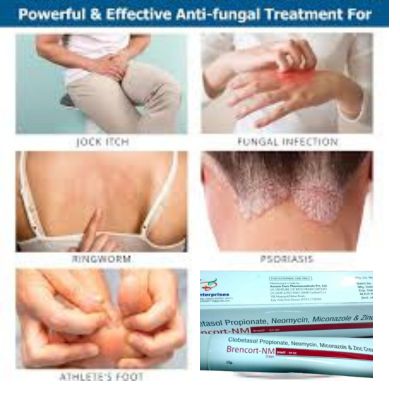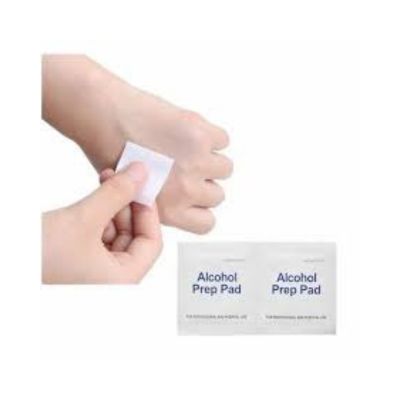First Aid Kit

A First Aid Kit is an essential part of every home, providing peace of mind and readiness for minor injuries and health issues. Whether it’s a scraped knee, a minor burn, or a sudden fever, having the right supplies on hand can make all the difference. In this guide, we’ll explore the 20 essential items every Home First Aid Kit should include. We’ll also highlight the importance of using high-quality, ethical medicines to ensure your family receives the best care possible.
1. Adhesive Bandages (Various Sizes)

Adhesive bandages, or Band-Aids, are a must-have for covering minor cuts, blisters, and scrapes. These bandages protect wounds from dirt and bacteria, aiding in faster healing. Stock your kit with a variety of sizes to handle different types of injuries.
2. Sterile Gauze Pads and Adhesive Tape

For larger wounds or those that need more protection, sterile gauze pads are essential. They help absorb fluids and protect the wound, while adhesive tape keeps the gauze securely in place.
3. Antiseptic Wipes and Ointments

Before covering a wound, it’s important to clean it with antiseptic wipes to prevent infection. Antiseptic ointments can also be applied to cuts and scrapes to promote healing and reduce the risk of infection.
4. Tweezers

Tweezers are essential for removing splinters, ticks, or other small objects from the skin. Choose a fine-tipped pair for precision, and always sterilize them before use to prevent introducing bacteria into a wound.
5. Scissors

Scissors are crucial for cutting gauze, tape, or even clothing in an emergency. Blunt-tipped scissors are safer, especially in stressful situations where precision is key.
6. Pain Relievers

Pain relievers like ibuprofen or paracetamol are vital for managing pain from injuries, headaches, or fevers. These should always be included in your first aid kit to ensure you can address pain quickly and effectively. Instant Pain relief spray should also be kept in case of pain due to spain or internal injury.
7. Fever Medicines

A fever can be a sign of an underlying infection or illness. Having fever-reducing medicines, such as paracetamol, in your first aid kit ensures you can manage high temperatures effectively.
8. Anti-Allergic Tablets

Allergies can strike unexpectedly, whether from food, insect bites, or environmental triggers. Anti-allergic tablets, like antihistamines, are essential for reducing symptoms like itching, swelling, or hives.
9. Cough Syrups

A sudden cough can be uncomfortable and disruptive. Including cough syrups in your first aid kit allows you to soothe a cough and address respiratory symptoms promptly.
10. Antifungal Creams

Fungal infections, such as athlete’s foot or ringworm, can be treated with antifungal creams. These are an important addition to your first aid kit, particularly if you or your family are prone to these conditions.
11. Instant Cold Packs

Instant cold packs are ideal for reducing swelling, pain, and inflammation from injuries like sprains, strains, or bruises. They activate quickly and don’t require refrigeration, making them convenient for immediate use.
12. Elastic Bandages

Elastic bandages provide support and compression for sprained or strained joints. They are adjustable, reusable, and essential for treating minor injuries that require stabilization.
13. Thermometer

Monitoring body temperature during illness is very important. A digital thermometer is an easy-to-use tool that provides quick, accurate readings, helping you respond appropriately to fevers or hypothermia.
14. Alcohol Swabs

Alcohol swabs are perfect for cleaning small wounds or sterilizing tweezers and scissors before use. Keeping these in your kit ensures you can maintain a clean, sterile environment when treating injuries.
15. Burn Creams or Gels

Minor burns can be treated effectively with burn creams or gels that provide pain relief and promote healing. These should be included in any first aid kit to ensure quick treatment of kitchen burns or sunburns.
16. Safety Pins

Safety pins are small but mighty tools in a first aid kit. They can be used to secure bandages, create slings, or even remove splinters in a pinch.
17. Eye Wash Solution

For eye irritations caused by dust, chemicals, or foreign objects, an eye wash solution is essential. It helps flush out irritants and provides relief from discomfort.
18. Medical Gloves
Wearing medical gloves when treating wounds or handling bodily fluids reduces the risk of infection and contamination. Ensure your first aid kit includes a few pairs of latex-free gloves to accommodate anyone with allergies.

19. First Aid Manual
A first aid manual is invaluable, especially in emergencies where you might need guidance on how to treat injuries. Ensure your manual is up-to-date and covers a wide range of common injuries and health issues.
20. Emergency Contact Information
While not a physical item, including a list of emergency contacts and medical information in your first aid kit is important. This should include contact numbers for doctors, emergency services, and poison control, as well as any specific medical needs or allergies for family members.
Why Quality Matters
When it comes to your health, the quality of the products you use is critical. Low-quality or expired items in your first aid kit can lead to ineffective treatment and even complications. This is why it’s important to choose products that are trusted by healthcare professionals.
Our company specializes in providing high-quality, ethical medicines that are used by doctors and hospitals. When you stock your first aid kit with our fever medicines, painkillers, anti-allergic tablets, cough syrups, and antifungal creams, you can trust that you’re using products that meet the highest standards of safety and effectiveness.
How to Maintain Your First Aid Kit (TIPS)
Keeping your First Aid Kit up-to-date is essential for it to be effective. Here are some tips:
- Regularly Check Expiration Dates: Make it a habit to check the expiration dates of all medicines and supplies in your kit. Replace any expired items immediately.
- Restock After Use: If you use an item from your first aid kit, be sure to replace it right away. This ensures your kit is always ready for the next emergency.
- Store in an Accessible Location: Keep your first aid kit in a place where all family members know to find it. It should be easily accessible in case of an emergency.
Conclusion
A well-stocked first aid kit is a vital part of every home. It prepares you to handle minor injuries and health issues quickly, which can make all the difference in an emergency. By including these 20 essential items in your kit and ensuring that the medicines you use are of the highest quality, you can protect your family’s health and well-being.
Ensure your home is fully prepared for emergencies by stocking up on these essential first aid items. For high-quality fever medicines, painkillers, anti-allergic tablets, cough syrups, and antifungal creams, ask your healthcare provider about products of B.R. Enterprises (APharmaceutical Company). Available through licensed pharmacies with a doctor’s prescription, our ethical medicines are trusted by healthcare professionals and designed to provide the best care for you and your family.

Hey people!!!!!
Good mood and good luck to everyone!!!!!